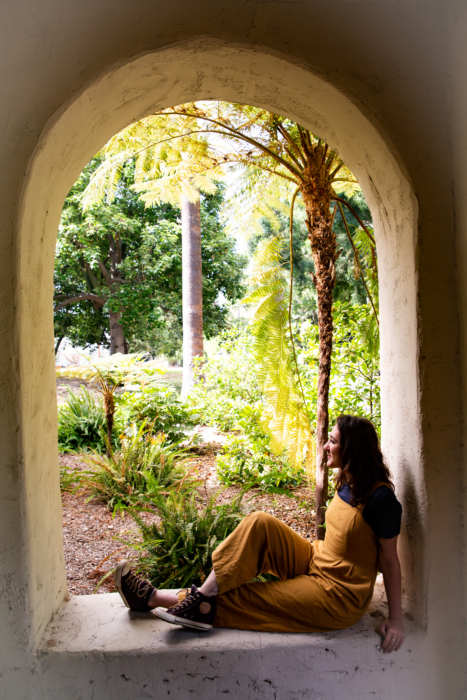By Emily Diamond ’20

Eve Kaufman ’20 spends her days poring over blueprints, studying architects, and considering how the built environment—the human-made spaces in which people live, work, and recreate—influences individuals and communities. As an environmental analysis major with a focus on sustainability and the built environment, the aspiring architect is interested not only in how buildings are designed, but also in the environmental and social implications that accompany their construction.
“A lot of healthy, thriving communities have open spaces or accessible city halls. It is important to have places where people can come together, connect, and organize,” says Kaufman.
This summer, Kaufman received a Summer Student Research Grant for interdisciplinary research to learn about the architectural style of Foster Rhodes Jackson, a Southern Californian architect from the mid-20th century. Kaufman is conducting her research through a partnership with Claremont Heritage, a nonprofit organization formed in 1976 by citizens of Claremont to preserve and advance the historic architectural, natural, and cultural resources of the community.
Kaufman started working with Claremont Heritage in 2017, when the organization received a collection of blueprints by Foster Rhodes Jackson. “I was working on a completely different project, but I saw these blueprints in the corner and I just wanted to get my hands on them,” Kaufman remembers. Ever since, she has been photographing, cataloging, and documenting the blueprints. Her daily tasks have also included meeting with the head archivist, analyzing blueprints, conducting interviews, and visiting Jackson’s buildings to better understand how people use the space.
“I really like looking at public spaces and seeing how people interact with them in the present and past,” she says.
Foster Rhodes Jackson’s architectural style is “organic,” as defined by fellow architect and mentor Frank Lloyd Wright. Organic architecture encompasses an environmentally integrated approach to design. Jackson designed various types of buildings, including single family homes, sprawling palaces, and churches.
“Jackson builds out scale models of basic shapes into sprawling complexes,” says Kaufman. “These shapes, typically reserved for the two-dimensional plane, find life and form in the third dimension within his works. The simple box structure typically found in architecture is rejected in favor of bold, sharp modernist lines and curvilinear strokes.”
Through this internship, Kaufman has learned about the benefit of looking into the past to draw inspiration for the future. “Before I started working at Claremont Heritage, I knew I wanted to be an architect, but I couldn’t envision what that work would look like. I couldn’t draw a building from my imagination. Studying past architectural work has expanded my confidence by giving me concrete visuals to show me what buildings could or should look like.”
Her internship has also led Kaufman to consider the importance of sustainable design, which promotes the redevelopment of existing buildings rather than always developing from scratch. “If we understand and expand upon the buildings that we already have rather than create something entirely new, we benefit the environment and prevent the destruction of neighborhoods,” says Kaufman.
To that end, Kaufman augments her research into architecture with local activism. She works at Inclusive Claremont, a community organization founded out of College Community Action Network that advocates for affordable housing in Claremont. “I wanted to get involved in the Claremont community through various projects and for an extensive period of time,” she says. “You can do a lot with your limited four years at Scripps.”

